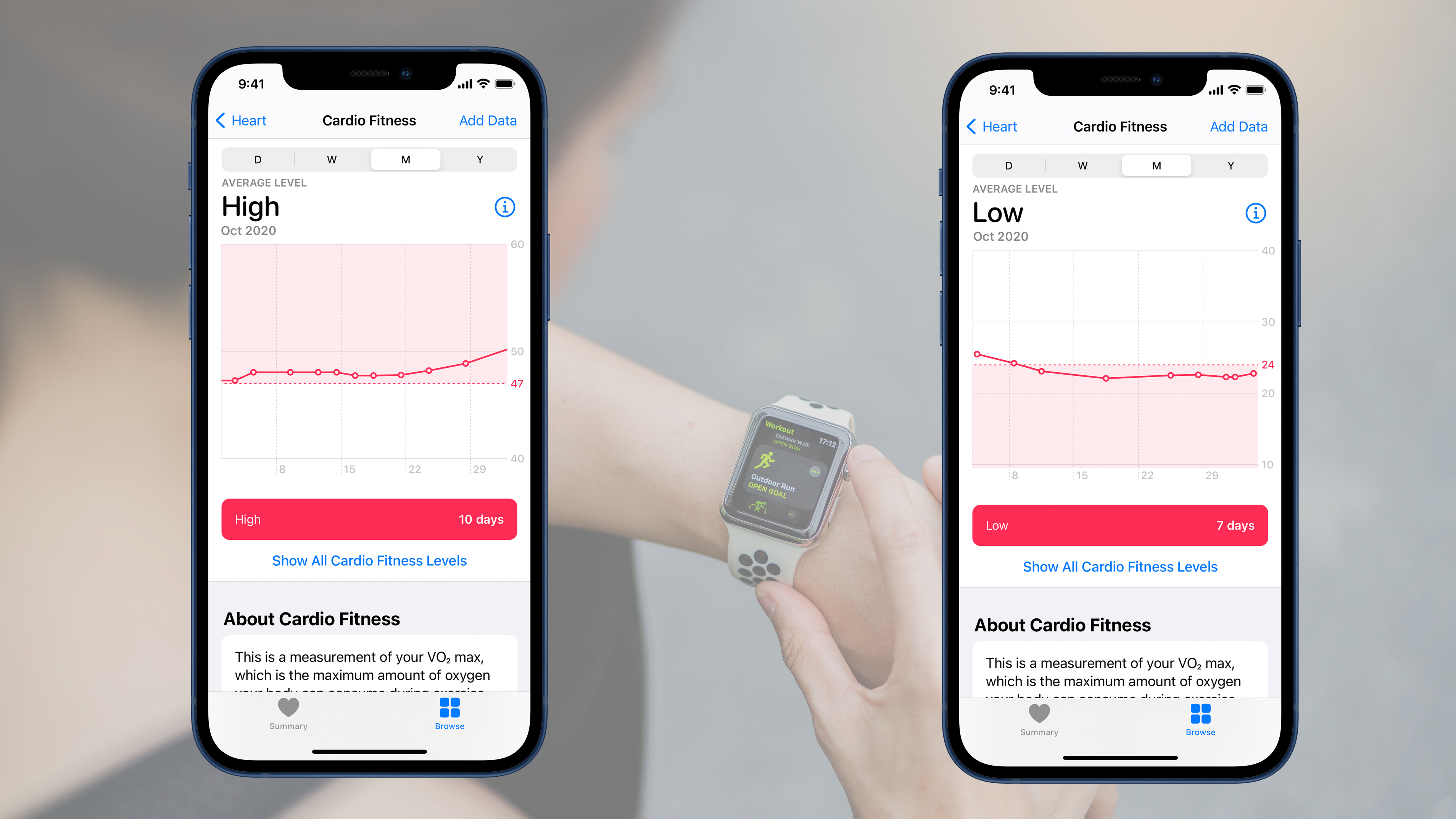
Your Apple Watch can now warn you if your cardio fitness is particularly low, and it’s time to talk to your doctor about how to improve it.
The new Cardio Fitness Levels feature comes with the release of iOS 14.3 and watchOS 7.2, and expands on the Apple Watch’s existing VO2 max feature.
VO2 max is the maximum amount of oxygen your body can use during exercise, and is a good indicator of your overall fitness. The higher the number, the more effectively your body uses oxygen, and the better your cardiovascular fitness. It’s not just for athletes, either – low VO2 max is associated with a raft of conditions including diabetes, stroke and heart disease.
- Apple Watch SE review: your complete guide to the smaller smartwatch
- Apple Watch 6 review: hands-on with Apple's flagship wearable
- Apple Watch 6 vs Apple Watch SE: choose the right watch for you
Previously, your Apple Watch could only give you a number for your VO2 max score, but now you can see where that figure fits alongside other people in your height and sex category (as entered in the Health app).
The new update puts your VO2 max score into context, showing you how it compares to other people in your age and sex bracket, and rating it ‘high’, ‘above average’, ‘below average’ or ‘low’. You’ll be told about factors that could affect your score, including pregnancy, or certain medications such as beta blockers.
If your score is trending down, you can choose to receive a notification on your phone and watch if your VO2 max slips into the ‘low’ zone (around the bottom 20th percentile for your bracket), as this could mean it’s time to have a conversation with your doctor about improving your fitness.
Improving fitness takes time, so you’ll be given a four-month window to improve your score. If it’s still low after that period, you’ll get a second notification.
Get daily insight, inspiration and deals in your inbox
Sign up for breaking news, reviews, opinion, top tech deals, and more.
How it works
VO2 max is most accurately measured in a lab environment, where you work yourself to exhaustion (typically on a treadmill) and your oxygen intake is measured using specialist equipment, but it can also be estimated by fitness trackers and smartwatches like the Apple Watch.
Different devices do this in different ways, but your Apple Watch uses the optical heart rate sensor to detect changes in heart rate, and correlates this with the amount of ‘work’ you’re doing based on data from the accelerometer, GPS and altimeter. When developing its algorithms Apple measured its results against those from lab tests, taking measurements before and after to see how they compare.
Initially, the Apple Watch could only record a VO2 max score during an intense outdoor workout, but with the release of WatchOS 7 in September 2020, it became possible to get a rating during casual outdoor walking.
This new feature made Apple’s cardio fitness tools accessible to people who don’t do hard cycling, running or swimming, and putting this data into context with the new Cardio Fitness Levels makes it even more useful, letting you see where you fit, and whether you need to take action to improve your health.
Cardio Fitness Levels are unrelated to Apple Fitness Plus, which is launching at the same time, but we could see the two potentially being linked together in future.

Cat is TechRadar's Homes Editor specializing in kitchen appliances and smart home technology. She's been a tech journalist for 15 years, having worked on print magazines including PC Plus and PC Format, and is a Speciality Coffee Association (SCA) certified barista. Whether you want to invest in some smart lights or pick up a new espresso machine, she's the right person to help.